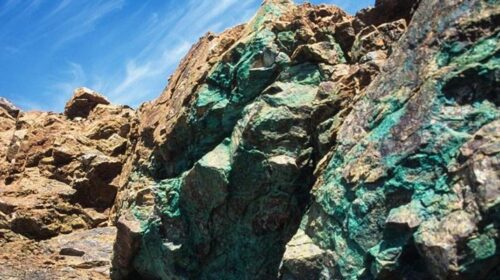DRC/Zambia: Is copper Africa’s new oil?
Until now, professionals in the mining sector thought that the charismatic Robert Friedland, CEO of Ivanhoe Mines, which is developing the Kamoa-Kakula copper megaproject in the DRC, was simply looking out for his best interests when he presented copper as the ‘metal of the future’ at his investor conferences.
But now many analysts share his point of view, including those at Goldman Sachs, who in early April published a research note titled Copper is the new oil, that is causing a stir among commodity traders.
In this 30-page document, Goldman Sachs argues that there can be no energy transition without this key metal; the price of which is predicted to rise to $11,000 per tonne in London, by April 2022, before reaching some $15,000 per tonne by 2025.
Not enough sites to meet demand
Copper is currently trading at around $9,500 per tonne in London, which is already its highest price in a decade. A year ago in April, it was selling at below $5,000 per tonne, the same price it was going for in November 2015 and October 2016.
Anton Löf, a metals market specialist at the Stockholm-based RMG Consulting, agrees for the most part with Goldman Sachs’ analysis.
“The transition to a low-carbon economy cannot happen without copper, which is both a key electrical conductor – far more efficient than other metals such as aluminium – and a crucial component for solar and wind power plants, electric vehicles and batteries, as well as energy-efficient buildings,” he says.
THE RACE TO TRANSFORM
Complete the form and download, for free, the highlights from The Africa Report’s Exclusive Ranking of Africa’s top 200 banks from last year. Get your free PDF by completing the following formEmail Address *
But while it takes about 10 years to get a copper project off the ground and three to five years to expand an existing mine, according to this specialist, there are not enough sites in operation or in the pipeline to meet the inevitable explosion in demand.
The irony of it all
“The environmental regulations for producing copper are also becoming increasingly strict, which makes it more expensive to produce,” he says. Even though the current price is higher than in the past, it is not enough to make all mines profitable, which has led to a decrease in investment in the industry.Africa InsightWake up to the essential with the Editor’s picks. Sign upAlso receive offers from The Africa ReportAlso receive offers from The Africa Report’s partners
The Swedish analyst also notes the irony of having, on the one hand, financial partners who are reluctant to support copper mining on the grounds of environmental and social risks, while at the same time championing an energy transition that requires its widespread use.
According to Löf, the African copper belt, which straddles the DRC and Zambia, should be the main region of the world – with South America to a lesser extent – to benefit from renewed interest from investors.
“When prices reach over $10,000 per tonne, new copper companies will undoubtedly emerge, which could fragment the market until the bubble inevitably bursts at the end of each mining cycle, leaving the competitive producers and others to sink or swim,” says Löf.
This is due to the fact that many of the African deposits – particularly in the DRC – contain not only copper, but also cobalt, which is another mineral that is crucial to the energy transition, as it is used to manufacture batteries for electric vehicles.
Another significant advantage, for companies based in the African copper belt, is that they have easier access than South America to Asian markets – especially China – thanks to logistics that are geared towards the major Indian Ocean ports of Dar es Salam and Durban, from where ore is shipped.
Beijing already accounts for more than half of the demand for copper, and this could increase in future, given its green-energy ambitions.
Finally, the cost of smelting ore – which transforms copper concentrate into pure ore – is currently very low, which benefits African producers who do not have foundries on site. They can therefore send concentrate to China to process at a lower cost. “It is currently more profitable to invest in mine expansion than in foundries,” says Löf.
Increased competition
Currently, the DRC and Zambia, with production of approximately 1.2m and 800,000tn of copper per year respectively, are the world’s fifth- and seventh-largest producers of the mineral, accounting for around 11% of the global market.
They are expected to soon regain market share from South American countries such as Chile and Peru, which together accounted for 43% of the global market in 2019. Africa has lost a lot of ground, as it had a 25% market share in 1960.
Despite a wave of natural-resource nationalism, which has boosted African mining codes in favour of host countries, the time has come to increase copper production on the continent.
This effort will no doubt be led by either the already well-established Western or Chinese extractive giants – such as Glencore at Kamoto (DRC) or China Moly at Tenke-Fungurume (DRC) – or by new players.
“When prices reach over $10,000 per tonne, new copper companies will undoubtedly emerge, which could fragment the market until the bubble inevitably bursts at the end of each mining cycle, leaving the competitive producers and others to sink or swim,” says Löf.
![]()





